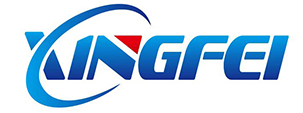In 2020, the COVID-19 has brought a huge impact on the global economy, and the demand for global remote conferences, cross-departmental multi-terminal collaboration, remote emergency command, digital twin cities, smart factories and distance education has been comprehensively improved, and China’s control room display industry as a whole has shown a contrarian upward trend.
Small pitch LEDs are the main force. In recent years, small-pitch LED with its seamless, thin, wide color gamut, good consistency and other characteristics in the indoor large-screen splicing display market has been rapid development, military, public security, energy, transportation, radio and television and other industries command centers, conference centers can be seen everywhere small pitch LED splicing display large screen. According to the survey data, the share of small-pitch LEDs is close to 60%, and it is predicted that its market share will exceed 70% by 2024, becoming the absolute main force in the indoor large-screen splicing display market.
![]()
So are small pitch LED products really perfect? Of course not, there are always two major diseases that plague the entire industry and become lingering pain points.
One of the pain points, long-term, close-up viewing is very dazzling, viewing comfort is not good;
The second pain point is that after using it for a period of time, there will be many “caterpillars” on the big screen, which will seriously affect the integrity of the picture.
![]()
What is the root of the problem? It lies in the PM (Passive Matrix) passive drive mode. LED lamp beads can be made smaller and smaller, and now they can be 0.4mm *0.4mm, or even smaller, but the driver IC cannot be so small, and it is impossible to achieve point-to-point precision control of 1 driver IC to 1 lamp bead. The industry generally uses 1 group (3) driver ICs to scan and drive dozens of rows and thousands of lamp beads at the same time, commonly known as PM passive drive.
![]()
In the PM passive drive mode, the lamp beads are lit off row by line, and in a small display area, only one row of lamp beads is lit at the same time, and the other rows of lamp beads are extinguished. It’s like using a laser pointer to quickly and repeatedly sweep your eyes, so fast that you think it’s constantly on, and the instantaneous peak brightness of the lamp beads can reach dozens of times the brightness of the senses, so you will feel very dazzling, even if the brightness of the LED screen is adjusted very low.
![]()
Under this pulse drive, the LED is doomed to be unable to supply power continuously, resulting in a dynamic display, which is the reason why the human eye is uncomfortable and is inevitable.
If there is a short circuit if 1 lamp bead is damaged, it will cause the entire row or column of lamp beads to be constantly on, commonly known as “caterpillar”.
![]()
Perhaps some people say that the main pain point of the small-pitch LED industry is the point spacing, and the smaller the point spacing, the better. In fact, in the application field of large-screen splicing display, the general minimum viewing distance is more than 3-5 meters, and the point spacing of P1.0-P1.5 is enough at this distance, and the point spacing that is too small is actually a waste.
![]()
How can we completely eradicate the two major diseases of watching the glare and the “caterpillar”? Contact us to get the best solution for indoor fine pixel pitch LED display screen solutions for your projects.



